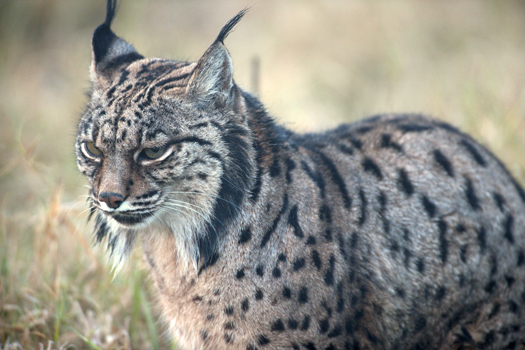There is the tendency to assume that endangered species have been both genetically and demographically healthier in the past, so that any genetic erosion observed today was caused by their recent decline. The Iberian lynx suffered a dramatic and continuous decline during the 20th century, and now shows extremely low genome- and species-wide genetic diversity among other signs of genomic erosion. Ancient (N?=?10), historical (N?=?245), and contemporary (N?=?172) samples with microsatellite and mitogenome data were analyzed to reconstruct the species' demography and investigate patterns of genetic variation across space and time. Iberian lynx populations transitioned from low but significantly higher genetic diversity than today and shallow geographical differentiation millennia ago, through a structured metapopulation with varying levels of diversity during the last centuries, to two extremely genetically depauperate and differentiated remnant populations by 2002. The historical subpopulations show varying extents of genetic drift in relation to their recent size and time in isolation, but these do not predict whether the populations persisted or went finally extinct. In conclusion, current genetic patterns were mainly shaped by genetic drift, supporting the current admixture of the two genetic pools and calling for a comprehensive genetic management of the ongoing conservation program. This study illustrates how a retrospective analysis of demographic and genetic patterns of endangered species can shed light onto their evolutionary history and this, in turn, can inform conservation actions. informacion[at]ebd.csic.es: Casas-Marce et al (2017) Spatiotemporal Dynamics of Genetic Variation in the Iberian Lynx along Its Path to Extinction Reconstructed with Ancient DNA. Mol Biol Evol https://doi.org/10.1093/molbev/msx222
https://academic.oup.com/mbe/article/doi/10.1093/molbev/msx222/4093877/Spatiotemporal-Dynamics-of-Genetic-Variation-in

 Las altas temperaturas están provocando que las lagunas y las marismas de Doñana pierdan agua rápidamente
Las altas temperaturas están provocando que las lagunas y las marismas de Doñana pierdan agua rápidamente




